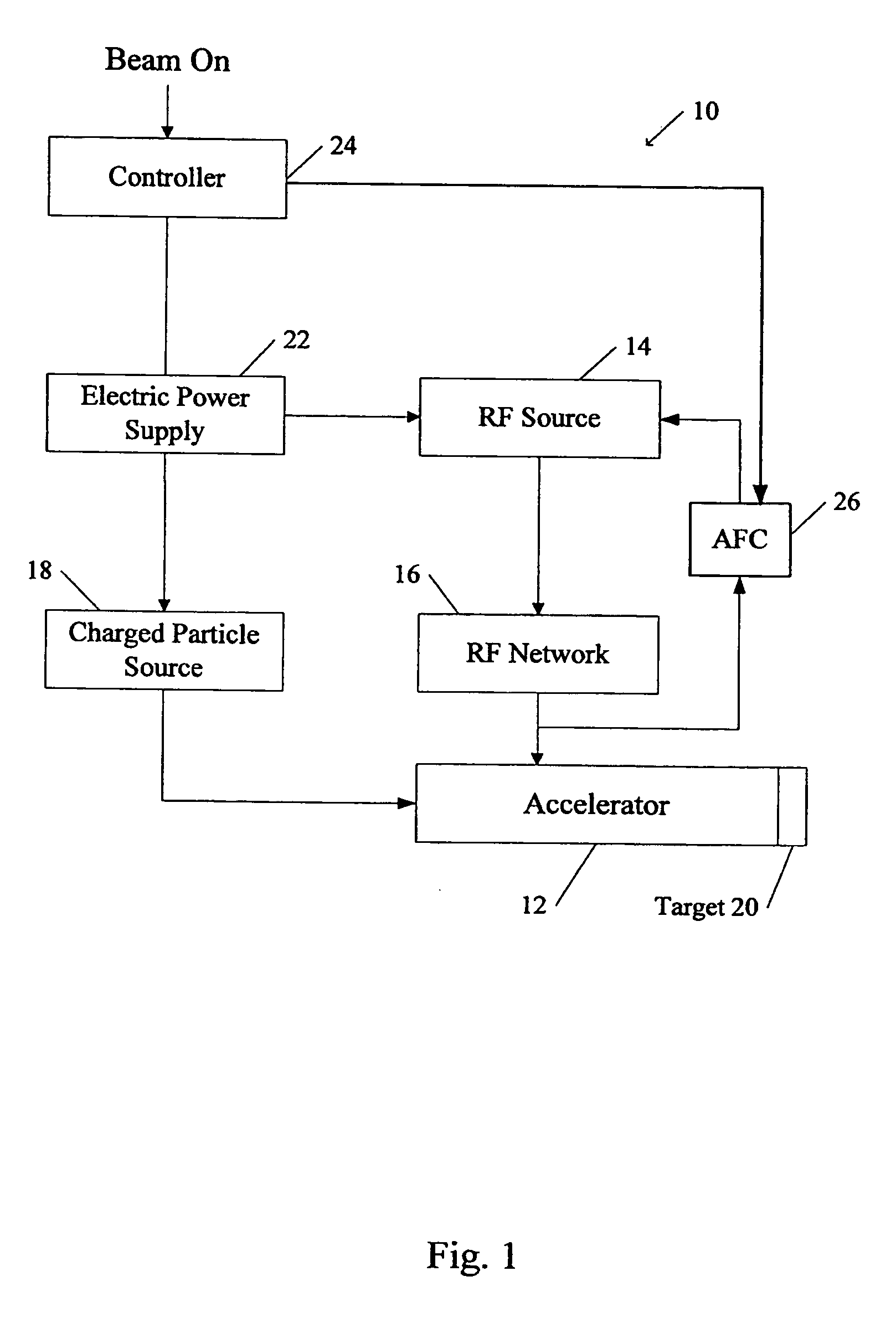Accelerator system stabilization for charged particle acceleration and radiation beam generation
a technology of accelerator system and charged particle, which is applied in the direction of accelerators, electrical devices, etc., can solve the problems of change in radiation beam energy and dose output, inability to turn the x-ray beam, and various sources of potential instability, and achieve fast frequency locking and stable radiation beam
- Summary
- Abstract
- Description
- Claims
- Application Information
AI Technical Summary
Benefits of technology
Problems solved by technology
Method used
Image
Examples
Embodiment Construction
[0035]FIG. 4 is an example of an RF accelerator system 100 configured to generate more stable radiation beams, in accordance with one embodiment of the invention. In this example, an RF source 102 provides RF power to an RF accelerator 104 through an RF network 106, and the charged particle source 108 injects charged particles to the accelerator, as described above. An electric power supply 110 provides electrical power to the RF source 102 and the particle source 108. In accordance with this embodiment, an on / off switch 112 is provided between the electric power source 110 and the particle source 108, enabling electric power to be provided to the RF source 102 without being provided to the particle source. A controller 114, such as a programmable logic controller, a microprocessor, or a computer controls the electric power source 110 and the on / off switch 112, in response to input signals from an operator and / or programming. A target 116 is provided for radiation generation. Automa...
PUM
 Login to View More
Login to View More Abstract
Description
Claims
Application Information
 Login to View More
Login to View More - R&D
- Intellectual Property
- Life Sciences
- Materials
- Tech Scout
- Unparalleled Data Quality
- Higher Quality Content
- 60% Fewer Hallucinations
Browse by: Latest US Patents, China's latest patents, Technical Efficacy Thesaurus, Application Domain, Technology Topic, Popular Technical Reports.
© 2025 PatSnap. All rights reserved.Legal|Privacy policy|Modern Slavery Act Transparency Statement|Sitemap|About US| Contact US: help@patsnap.com



